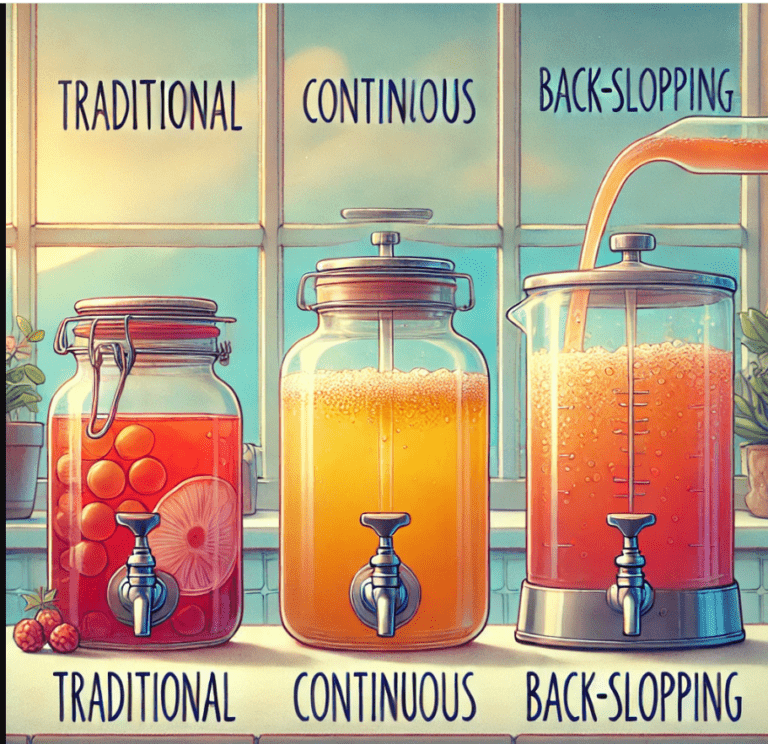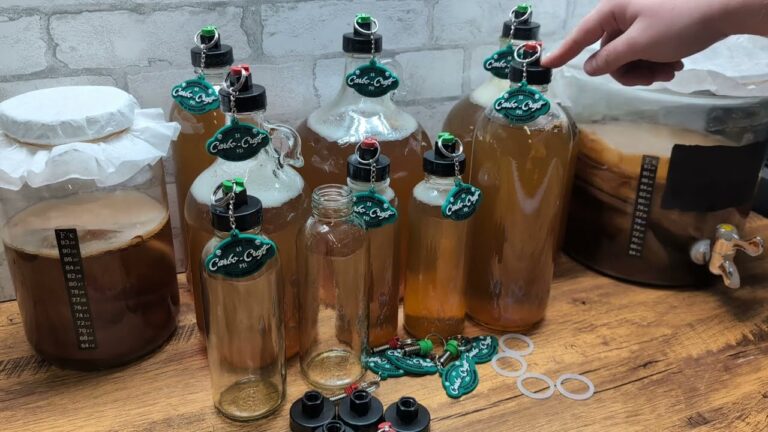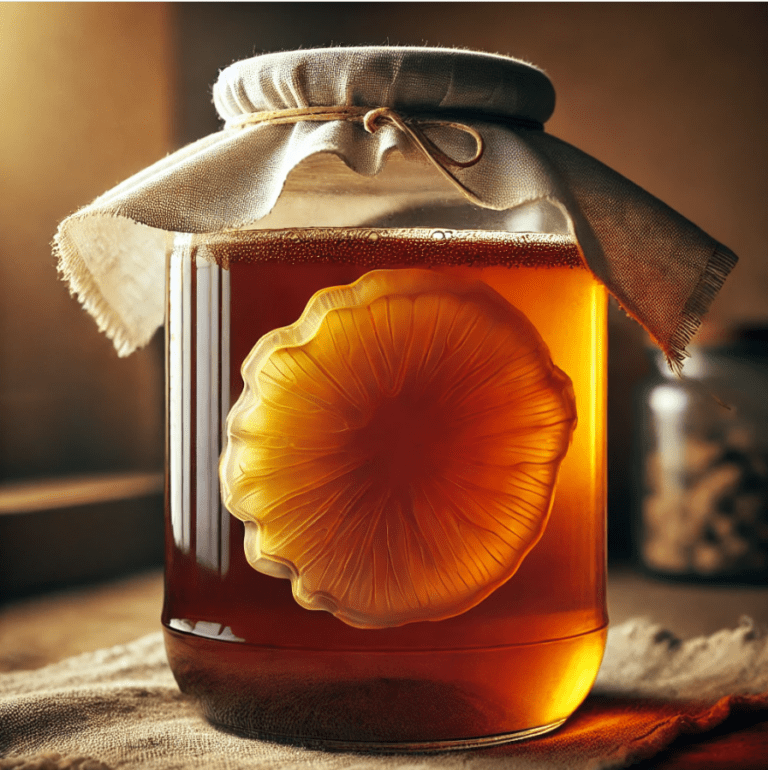Brewing Better Kombucha: How Chemistry and Silicone Bags Are Transforming Kombucha Fermentation
So, there I was, cruising the endless corners of the web in search of the latest kombucha trends—just your typical day in…
So, there I was, cruising the endless corners of the web in search of the latest kombucha trends—just your typical day in the life of a kombucha fanatic—when I stumbled upon something that could flip your fermentation game on its head: brewing kombucha in silicone bags. Hold on to your SCOBYs, folks, because what I found next might just change everything you thought you knew about brewing kombucha.

The Chemistry Behind Kombucha Fermentation
Kombucha, that tangy, effervescent tea we all love, is traditionally brewed in glass jars. You know the drill: tea, water, sugar, and a SCOBY (symbiotic culture of bacteria and yeast). The yeast gets to work on the sugar, producing ethanol and simple sugars like glucose and fructose. Then, the bacteria step in, converting ethanol and the remaining sugars into acids, giving kombucha its distinctive flavor. However, because SCOBYs are living cultures, the fermentation process can be unpredictable, sometimes resulting in higher alcohol levels or less desirable flavors.
But what if I told you there’s a way to make this process faster, more efficient, and even tastier?
Silicone Bags: The Future of Home Kombucha Brewing
The real game-changer here is a study out of Shippensburg University, led by Jeb Kegerreis and John Richardson along with their team of chemists, that explores the use of air-permeable silicone bags instead of traditional glass jars for brewing kombucha. Unlike glass, silicone is porous, allowing more oxygen to interact with the SCOBY. This increased oxygen exposure accelerates the brewing process, cutting fermentation time from about two weeks to just one week. More oxygen means the bacteria work harder, producing more gluconic acid—a milder acid that adds complexity to the flavor without the harsh vinegar bite of acetic acid.
According to Kegerreis and Richardson, using an air-permeable silicone bag not only speeds up the fermentation process but also results in a more balanced brew with lower alcohol content.

This could be a significant innovation for homebrewers, who often struggle with controlling alcohol levels in their kombucha. The lower alcohol and higher acid content create a product that’s not just quicker to make but potentially more flavorful and health-conscious.
Why Silicone Bags Beat Glass Jars for Homebrewing
Now, you might be thinking, “But why switch to silicone bags when glass jars have been working fine?” Here’s why:
- Faster Fermentation: The porous nature of silicone allows oxygen to penetrate from all sides, enhancing bacterial activity and speeding up the fermentation process.
- Better Flavor Control: The increased production of gluconic acid in silicone bags results in a more complex and less vinegary flavor profile.
- Lower Alcohol Content: For those looking to keep their kombucha’s alcohol levels in check, silicone bags offer a solution by promoting greater ethanol consumption by bacteria.
- Cost-Effective: Silicone bags could be a cheaper alternative to glass jars. Plus, they are reusable and durable, which might reduce long-term costs.
- Less Risk of Contamination: The closed environment of a silicone bag helps keep out unwanted invaders like fruit flies, reducing the risk of contamination.



Addressing Concerns of Traditionalists
For those who love the aesthetic and tactile experience of brewing in glass jars—seeing the SCOBY develop, watching the bubbles rise—switching to silicone bags might seem less appealing. However, the practical benefits in terms of speed, flavor control, and safety could outweigh these concerns. Plus, it’s worth considering that commercial brewers already use methods to inject oxygen into their brews, so homebrewers adopting silicone bags would be following in the footsteps of industry experts.
Practical Tips for Transitioning to Silicone Bags
- Where to Source the Bags: Currently, silicone bags designed specifically for kombucha brewing are hard to find, as most are intended to keep air out rather than let it in. I’m actively researching sources and pricing for these niche bags. As they become more available, pricing could be a key factor in their adoption. In the meantime, homebrewers interested in experimenting might look into sous-vide silicone bags as a temporary solution, though they may need to modify them slightly to ensure proper air permeability.
- Cleaning and Maintenance: Silicone bags are easy to clean and highly durable. To maintain their air-permeable qualities, wash them with mild soap and warm water after each use, and make sure they dry completely before storing.
- Best Practices for Use: When using silicone bags, it’s crucial to ensure they are suspended properly to allow maximum oxygen exposure from all sides. Clamp the bags securely and avoid overcrowding them in your brewing space to optimize airflow.
Exploring Alternative Fermentation Vessels: Ceramic and Plastic Containers
In addition to the findings from Shippensburg University, research from the University of Guelph suggests that alternative fermentation vessels like ceramic and plastic containers can also influence the brewing process. Ceramic, being semi-porous, allows moderate oxygen exchange, potentially leading to quicker SCOBY growth. Plastic containers, particularly food-grade and BPA-free options, offer some oxygen exchange as well, though less than ceramic. Both materials provide brewers with new ways to experiment with flavor and fermentation speed.
Real-World Examples and Research Insights
As of now, the most detailed exploration of brewing kombucha in silicone bags comes from Jeb Kegerreis, John Richardson, and their team at Shippensburg University. Their research demonstrates the clear benefits of using silicone bags, especially in achieving a lower alcohol content and more balanced flavor profile. While anecdotal examples from other homebrewers are scarce, this pioneering study provides a solid foundation for others to explore this method.
If you’re curious to dive deeper into the science, I highly recommend checking out the full research paper here. The insights shared by Kegerreis, Richardson, and their team are a must-read for anyone serious about improving their kombucha brewing process.
Highlighting Environmental Benefits
Another compelling reason to switch to silicone bags is their environmental impact. Unlike glass jars, which can break and require replacement, silicone bags are reusable and highly durable. This not only reduces waste but also aligns with the growing trend of eco-friendly brewing practices.
The Future of Kombucha Brewing
The work being done by chemists at Shippensburg University, alongside other studies like those from the University of Guelph, is a testament to how science can enhance traditional practices like kombucha brewing. Whether you’re a home brewer or a commercial producer, these findings offer valuable insights that can help you make better, more consistent kombucha.
So, if you’re a homebrewer who’s been faithfully using glass jars, it might be time to rethink your brewing vessel. Silicone bags could be the next big thing in kombucha brewing, offering faster fermentation times, better flavor profiles, and a more controlled brewing environment. Ready to take your kombucha game to the next level? Consider giving silicone bags a try, and let science give your brew the edge it deserves. And hey, if you do, drop a comment or tag us on social media
For a deeper dive into the research, check out the original article from the American Chemical Society: Better kombucha brewing through chemistry.







Where did you obtain the clips you are using to hold up the silicon bags, and what are they called? They look like wooden hangers of some type but I cannot seem to find ones like the ones you are using.
Thanks.